How to grow cosmos – expert tips on when and where to plant these flowers
Learn how to grow cosmos to add bright color in your garden from summer through to fall with their beautiful blooms

Garden favorites for summer color, learn how to grow cosmos and you can enjoy clouds of these daisy-like flowers dancing in the breeze and filling garden beds and borders.
Ranging from pale pastels and whites through to bright pinks, crimson, orange and other zingy colors, these annuals are enduring favorites for flower bed ideas. They will happily self seed for several years, filling your yards with their open-faced blooms that can go on for months and months, adding to your palette of late summer flowers and still displaying their cheery blooms until the first frosts of fall.
Cosmos comes from the Greek ‘kosmos’, meaning beautiful, and growing tall with their fine, feathery deciduous foliage, cosmos are definitely one to include if you're planning a cut flower garden as the more flowers you pick, the more you'll get.
There are many cultivars available, including doubles, others with tubular rays and some bi-colors, in different tall and compact varieties.
Once you know how to grow cosmos you'll be using them to brighten up all corners of your garden.
How to grow cosmos from seed
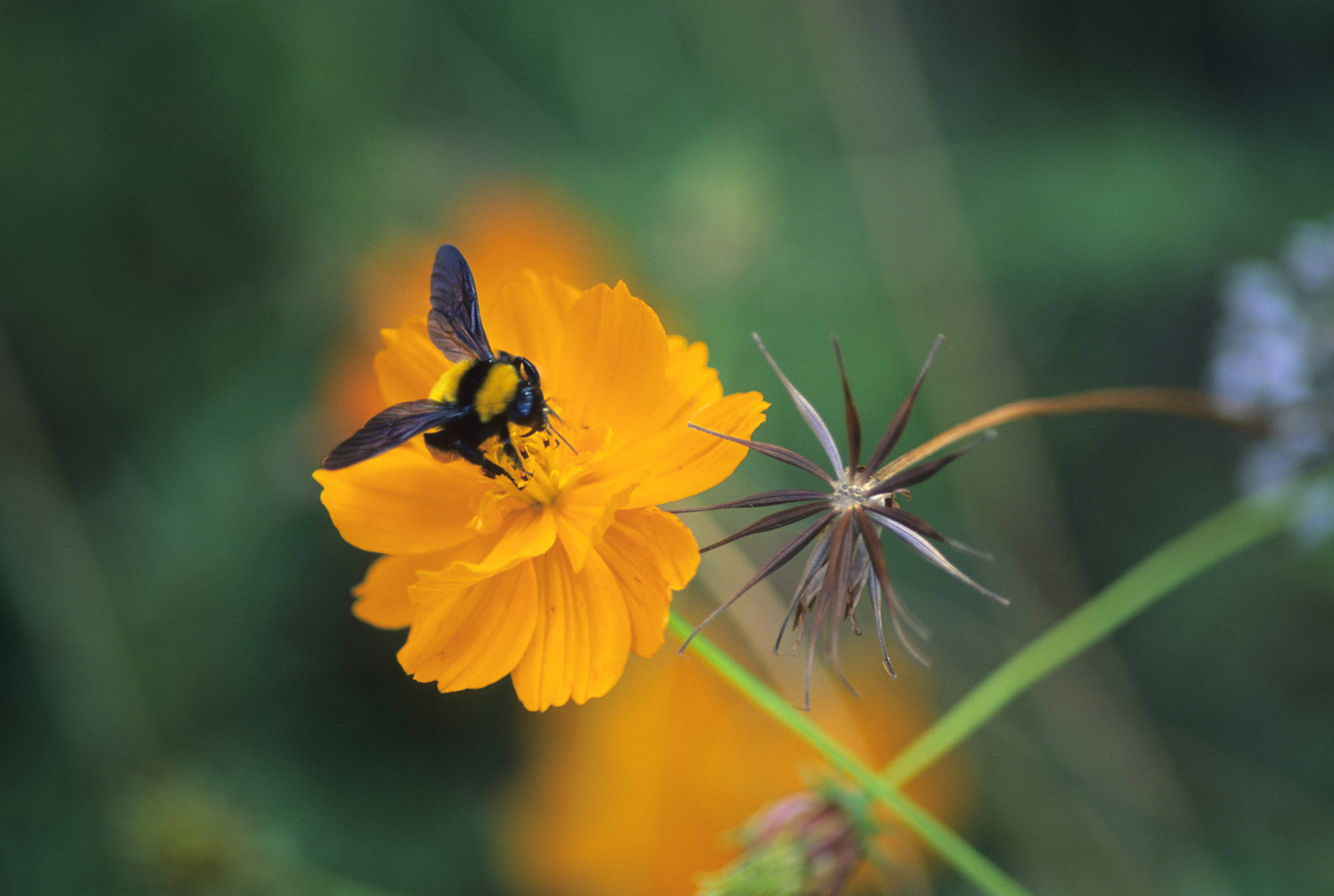
It is easy to get to grips with how to grow cosmos from seed and they can be sown any time throughout spring depending on the hardiness zone where you live. The seeds are large, long and thin, so easy to handle and germinate quickly.
'Cosmos are the very best, low-maintenance and floweriest plants in the world. With little effort, they give you buckets of cut flowers and they have a good vase life, too. Easy to grow, long-flowering and brilliant for picking, it’s hard to fault them,' says expert plantswoman, Sarah Raven.
These pollen-rich flowers are also an excellent lure for bees and other pollinators to attract them into a wildlife garden. 'They are stacked with nectar and pollen, so bees and butterflies love them,' agrees Sarah. too.
Cosmos bipinnatus, the most commonly grown, also known as Mexican aster, originates from the Americas.
When it comes to growing cosmos from seed you have two options. You can grow them in modules or seed trays indoors, or plant them directly out in the garden. There are benefits to both.

How do you successfully grow cosmos?
Growing cosmos in modules or seed trays indoors to start them off, gives you more control over the blooms. Keeping them off the ground and under cover will also protect the delicate seedlings from slugs and harsh weather. Plus, since you are starting your plants off indoors, you are able to start planting earlier – in early spring – so will have well established flowers that attract bees by early summer.
Sow indoors in module or seed trays, covered with about 2mm of good, fresh compost. Water from below, allow excess water to drain away and position in a warm place, ideally 60 to 70 0°F (16 to 21°C), to germinate, which takes around 30 days.
Move seedlings to a cold frame or light, sheltered spot for a few weeks before planting out to harden them off. This will result in 'much faster growing and longer-lasting flowers,' says gardening guru Monty Don on his blog. He also recommends doing the same for young cosmos that are bought in the garden center, too.
Direct sowing cosmos outdoors
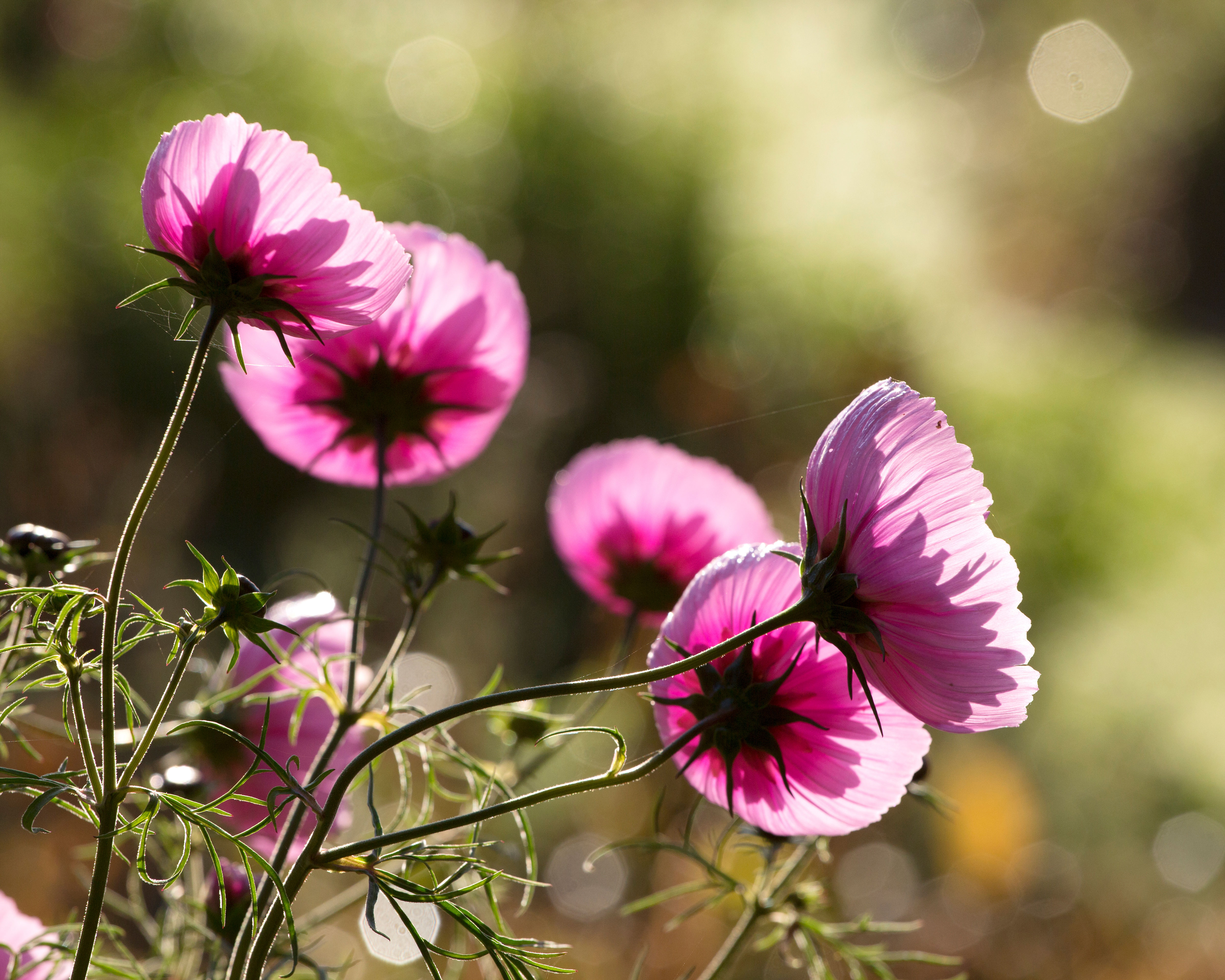
If you choose to direct sow cosmos outdoors, this is a low-maintenance choice that is beautiful for a cottage garden idea. 'I place them in groups so they make drifts and clumps rather than straight lines,' says Monty.
For how to grow cosmos seeds outdoors, wait until the soil has warmed up, then:
- Rake your seedbed area to remove any clumps of soil and achieve a crumbly texture;
- Cosmos don’t need any special soil preparation – in fact, a too rich soil will encourage foliage rather than flowers;
- Sow seeds lightly, spaced about 2-3in (5-8 cm) apart;
- Thin out seedlings;
- Water until established but don’t over water as that can lead to less flowers.
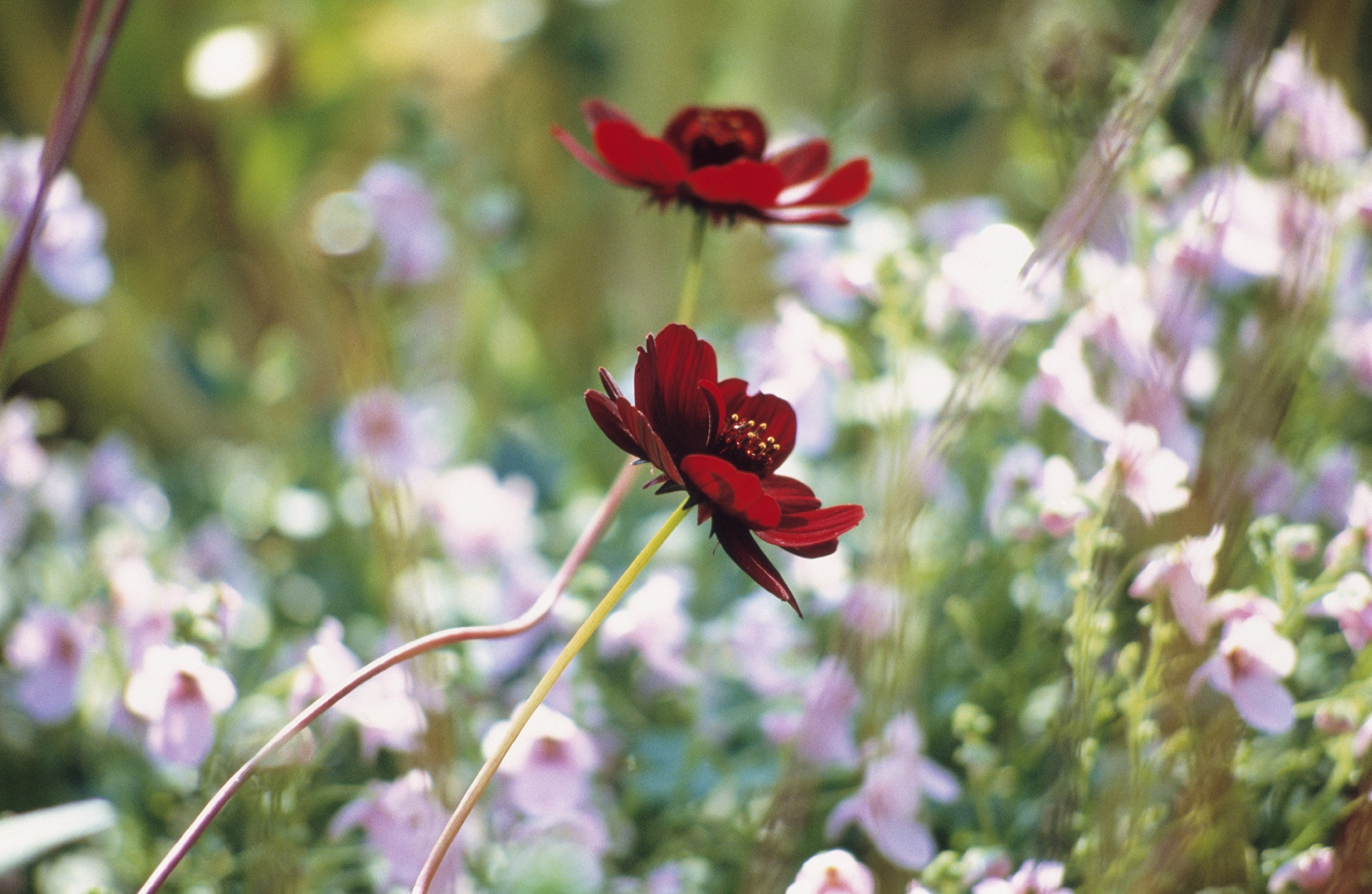
Where do cosmos grow best?
Cosmos grow best in a sunny spot, protected from wind, with well-drained, light soil. It is advisable to mulch the ground to conserve moisture, and if you learn how to make leaf mulch you can use your own organic garden material.
If you live in a very warm zone that can suffer extreme heat, cosmos will tolerate part shade.
Cosmos tolerate most pH levels, but do best in neutral to alkaline soils and are quite drought tolerant, so might be worth adding to your planting palette if you're planning a dry garden. Long periods or wet and cold are detrimental and can delay flowering.
Plant your cosmos in a group to make a real focal point statement for late summer into fall until the first frost. This will also attract more bees than if they are dotted through the garden.
Cosmos are useful for cheery color in any area of a backyard and suit a range of styles – from planting a cottage garden border, creating a prairie style naturalistic planting design, or planting a wildflower meadow.
‘I love to grow lots of different varieties of cosmos, putting together different heights and colors in pots and for borders for wonderful layers of intense colour,’ says Sarah Raven.
They are also excellent for companion planting alongside vegetable and fruit crops in a kitchen garden, as they entice pest predators and valuable pollinators. 'We plant cosmos with our vegetables, in rows to help support each other,' explain Henrietta Courtauld and Bridget Elworthy, the Land Gardeners.
When to plant cosmos seeds
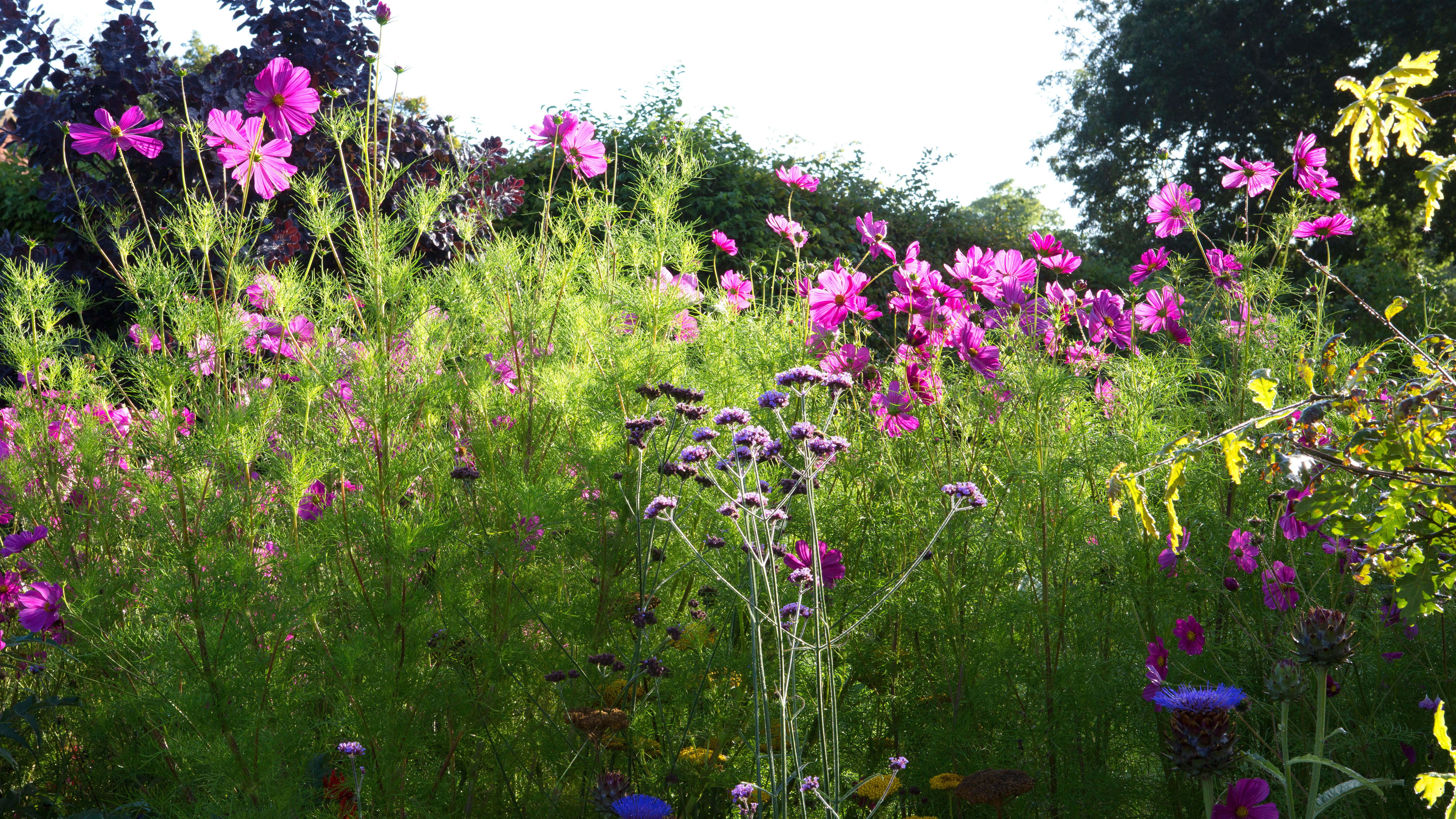
Early spring is the best time to sow cosmos seeds under cover indoors, which will then produce flowers that bloom earlier in summer.
Alternatively you can direct sow cosmos seeds in their flowering position once the soil has warmed up. This will differ depending on the area where you live, but will be from about late May in cooler regions, and earlier in warmer zones.
Bought seedlings can be planted in late May or June.
Is cosmos easy to grow?
Yes cosmos are easy to grow. 'Cosmos is one of the easiest flowers to grow from seed that is directly sown in the garden bed,' advise the experts at American Meadows.
‘As they grow, stake cosmos if necessary, and water them regularly,' says Sarah Raven.
Cosmos suffer from few pest problems. Watch out for slugs and snails, though, especially when the plants are young and tender, so use slug barriers. To avoid powdery mildew and fungal diseases ensure your plants have space and the soil isn’t soggy. 'Cosmos prefer dry, arid soil over wet conditions. Soil that is too moist may lead to disease,' advise the American Meadows experts.
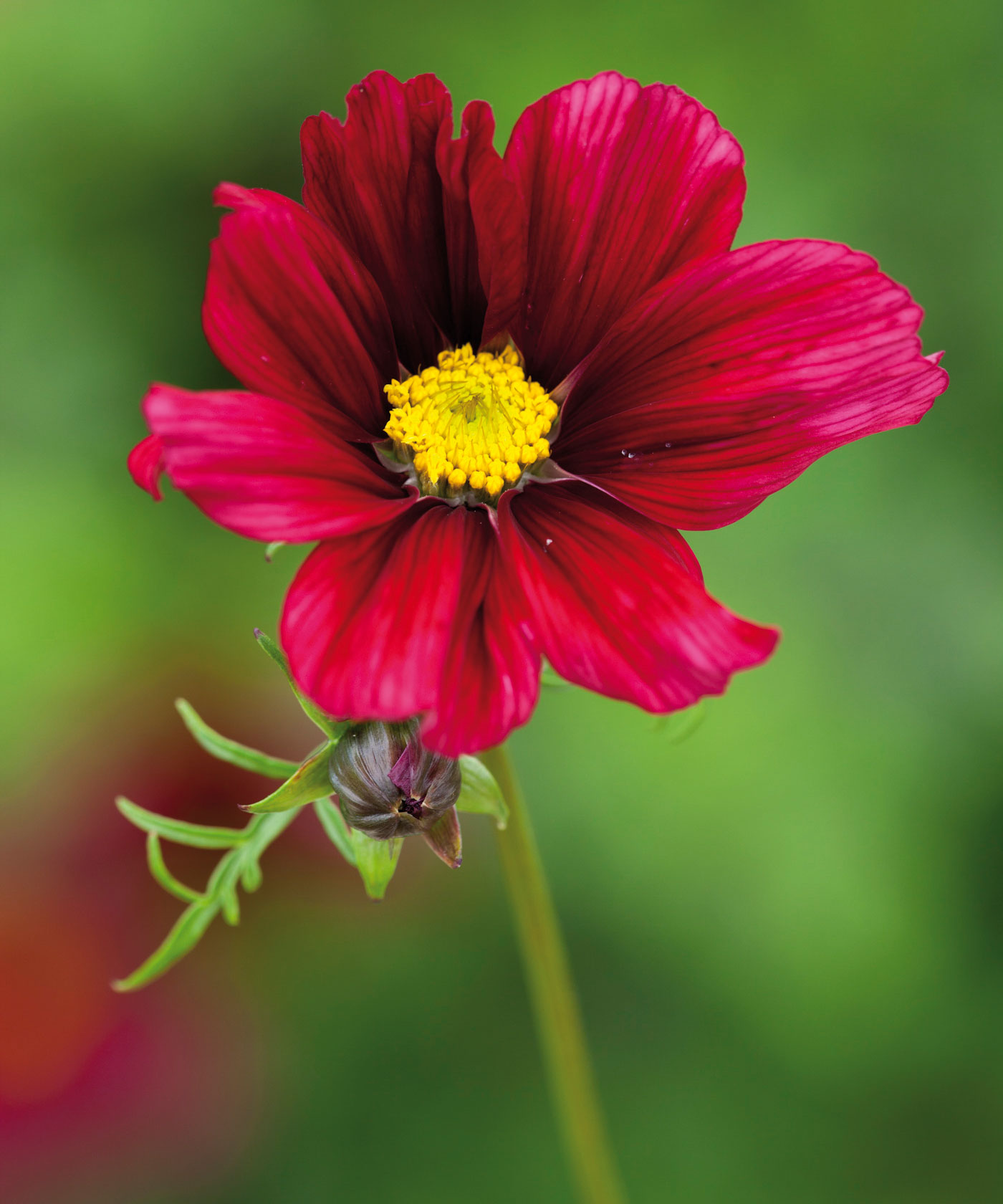
Can you put cosmos in pots?
Cosmos, particularly the shorter varieties, can be grown in pots, and make attractive patio and container plants. As they are good at attracting beneficial insects to veg and fruit crops, why not include them in your vegetable garden container ideas?
Try a mix of shorter dwarf cosmos varieties, such as the Sensation and Sonata mixes, grown from seed, or buy as seedlings and plant out from May, spaced about 11in (30cm) apart. Cosmos work particularly well in pots with zinnias.
Use a light potting mix, in pots with good drainage and place in a sunny spot. Water regularly and feed with a liquid fertilizer every few weeks during summer.
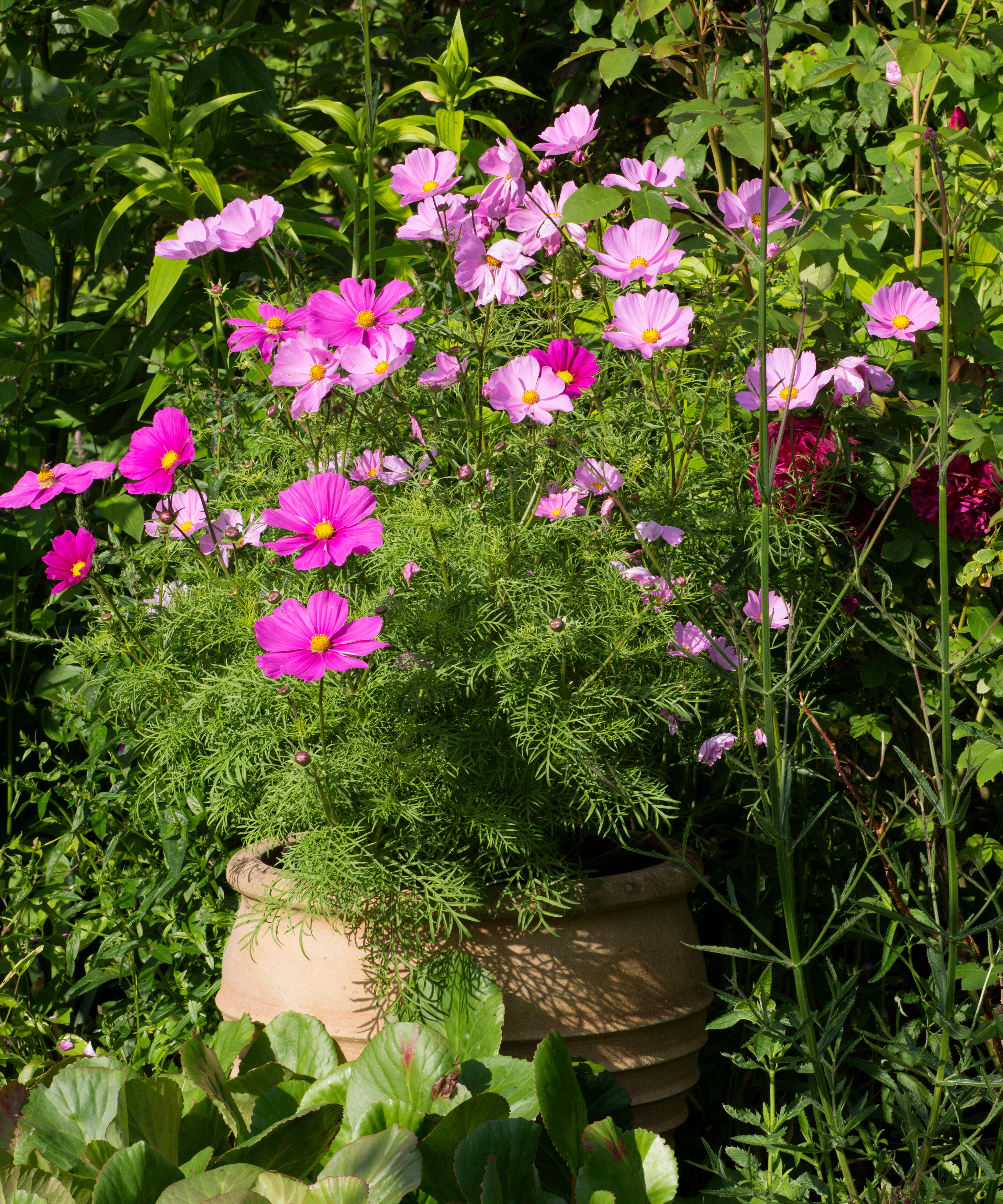
How to keep cosmos flowering
If your cosmos aren't flowering, you could be making one crucial mistake. An important step in how to grow cosmos and keep them flowering is to deadhead the blooms. This stops the plant putting its energy into creating seeds and instead puts its efforts into creating more flowers.
Chances are you will be busy in the garden deadheading roses and petunias, and other blooms, so add cosmos to the list.
'As long as you don’t cut the plants right to the ground, but above a pair of leaves, more buds will form to fill next week’s vases and more for the week after that. The lower you go in the plant, the more delay between the flower you've just picked and the next flower,' explains Sarah Raven.
'We love cosmos because it is light and airy and has the joy of endless giving – every time you deadhead another flower appears,' add the Land Gardeners.
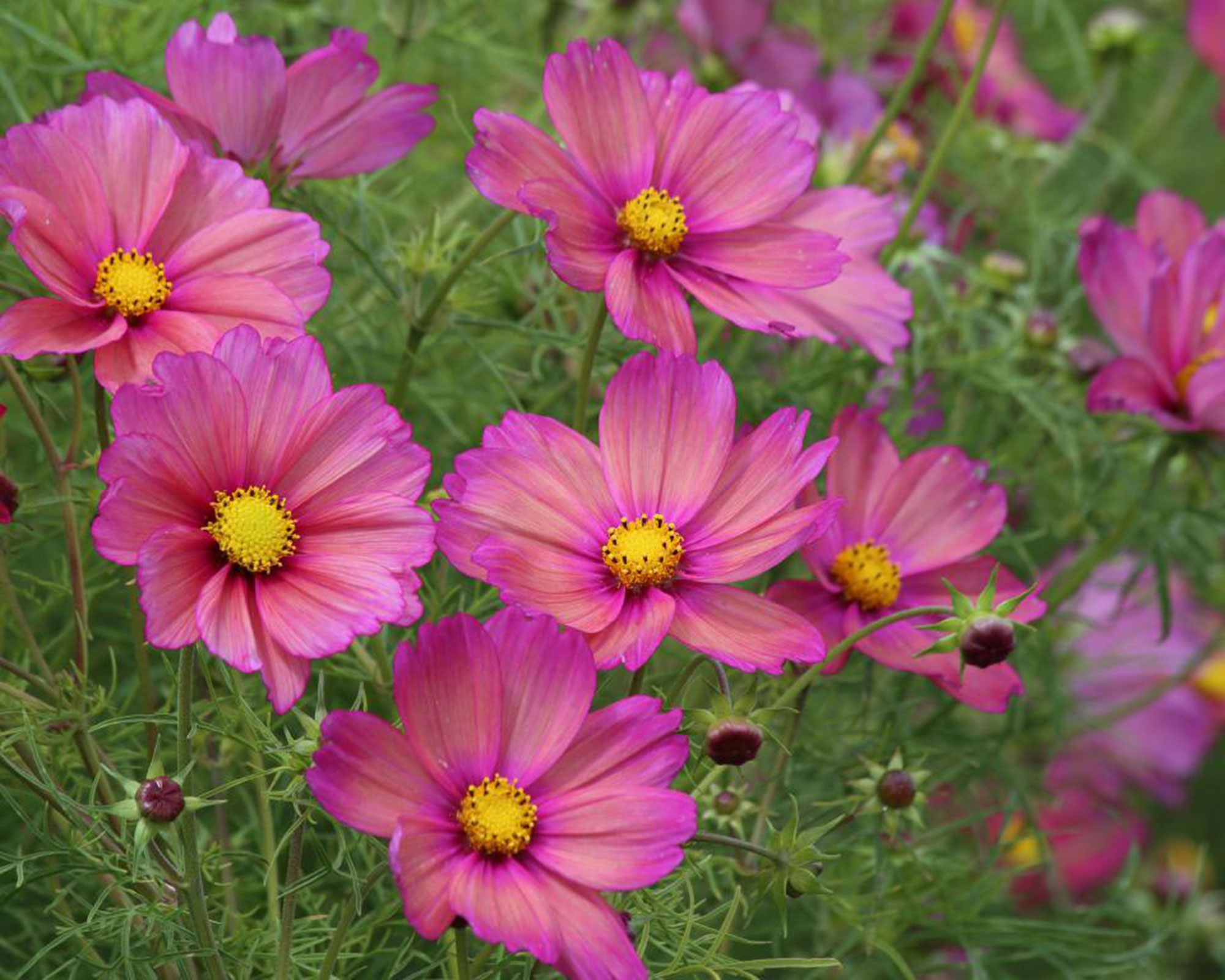
Do cosmos come back every year?
Nearly all cosmos are annuals meaning they do not come back every year. In order to have blooms every year, you will need to resow the seeds the following spring.
The only exception to this rule is chocolate cosmos, cosmos atrosanguineus, which is grown like a dahlia from a tuber and is a perennial. Chocolate cosmos is loved for its delicious vanillary-chocolate scent and velvety brown flowers, and since it is a perennial, will come back year after year.
Annual cosmos can also self seed. If you let some of your cosmos flowers die naturally and fall to the ground they will germinate seeds by themselves. Allowing plants to self seed is a step on the way to creating an eco-friendly garden.
You may also like to try collecting seeds to save from the flowers to sow next spring. If you want to save seeds be aware that hybrids will not grow true-to-type, so select varieties that have been open pollinated, as opposed to hybrids – which can vary widely in the next generation.
You can collect cosmos seeds at the same time as you are collecting zinnia seeds and those of other flowers that you love. This is a cost-effective way to populate your garden with flowers, year on year.
Scatter the collected seeds in your garden or save in labelled envelopes or paper bags for sowing the next year.
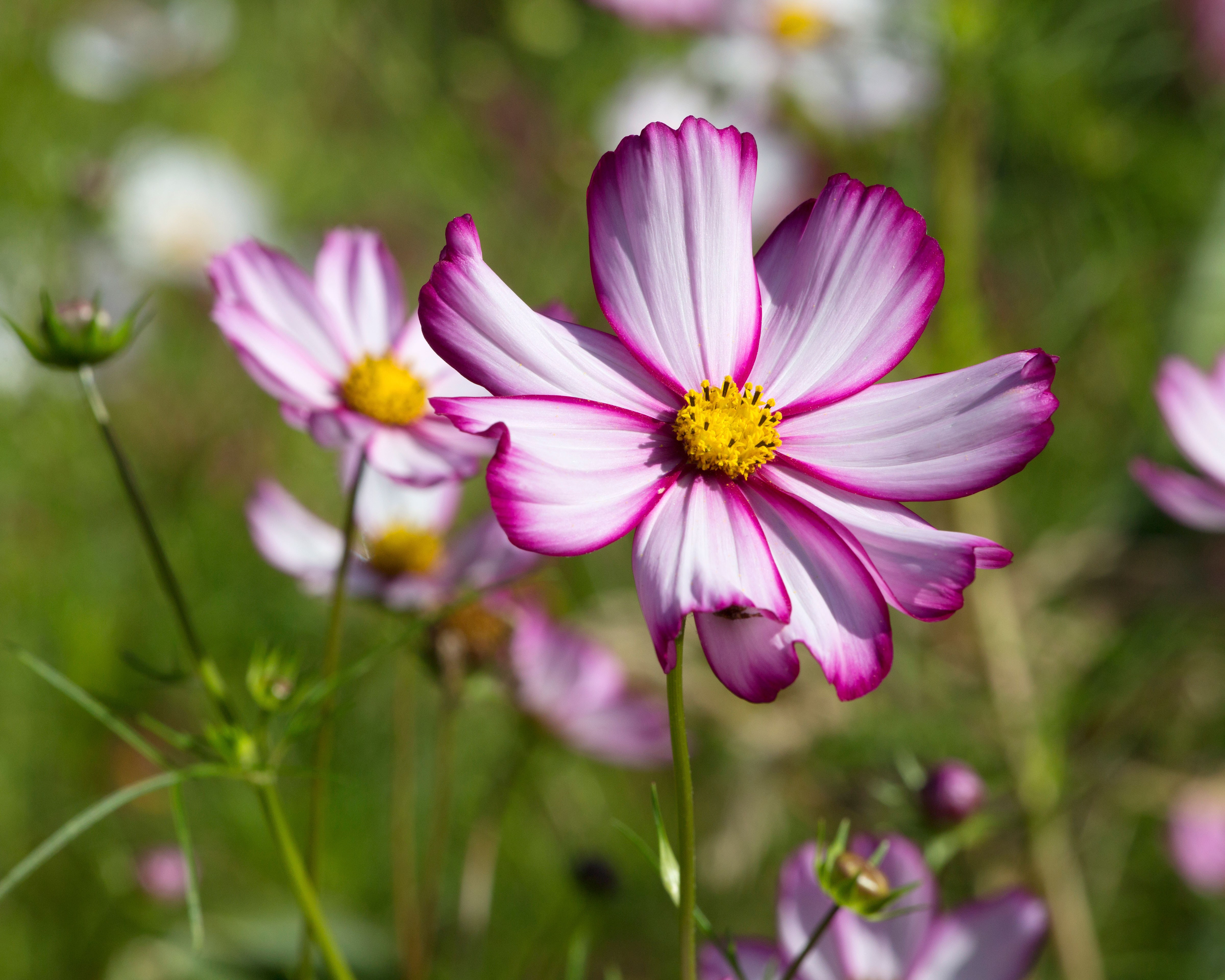
Do you pinch cosmos?
You should pinch out the growing tips of cosmos to encourage branching and flowering, and in around 12 weeks you should see your first blooms.
If you then want to enjoy those flowers in the house as well as in the garden, cosmos make excellent cut flowers. To harvest for cut flowers, cut the cosmos blooms when they are beginning to unfurl in the morning, as this is when there will be the most moisture making them less likely to wilt.
Plunge the blooms into a bucket of warm water, stripping off lower leaves to avoid them in the water. There are many tricks for how to keep flowers fresh in a vase. Re-cut the stems regularly and refresh the water and cosmos should last up to 10 days in the vase.
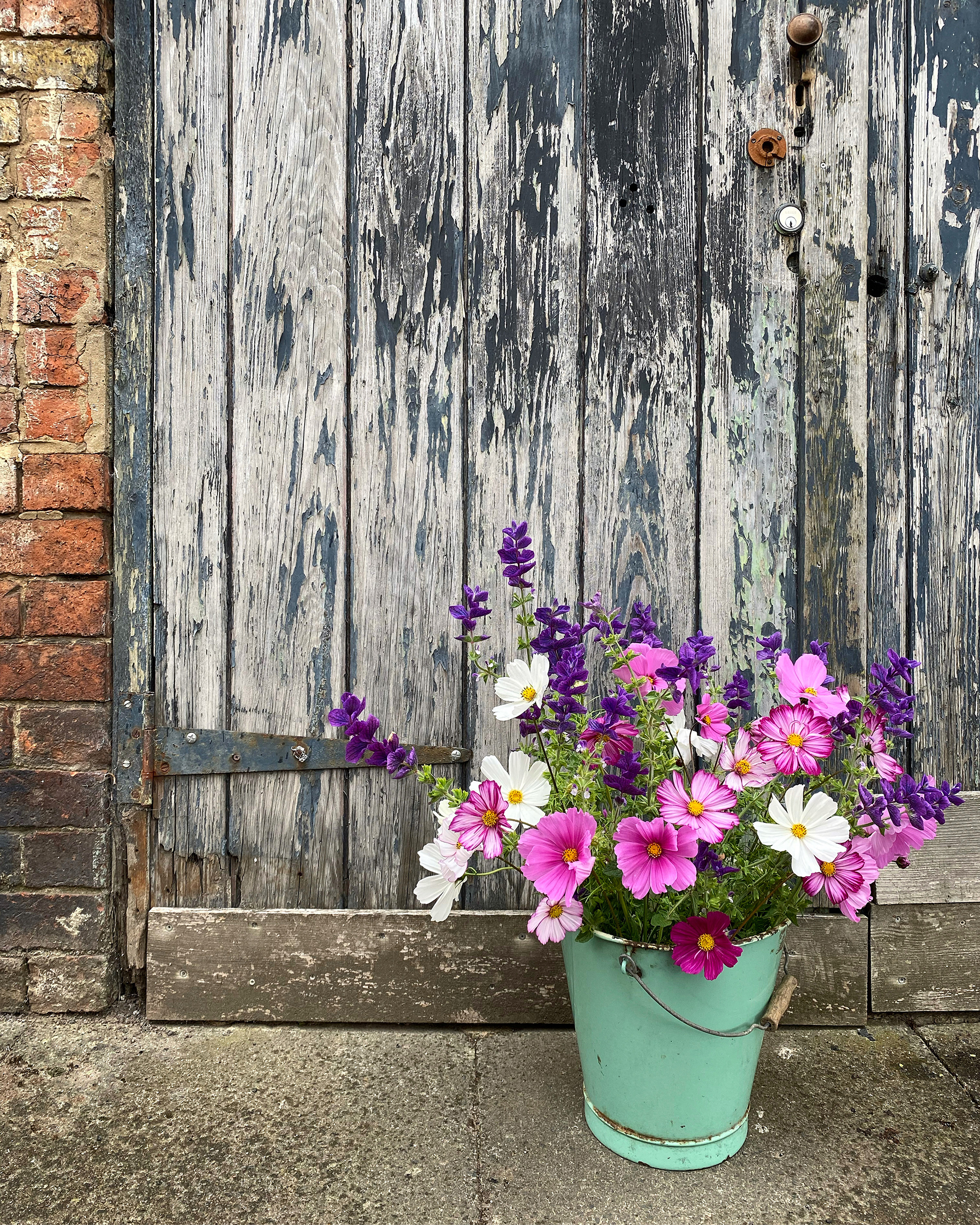
Do cosmos need staking?
The taller varieties of cosmos will need staking to prevent them flopping over.
They can grow up to 8 feet (2.5m) and flowers can reach 3 inches (8cm) across.
‘It’s worth taking the time to stake them properly as they benefit greatly from growing straight early on. If they collapse, they’ll never grow or flower as well as when vertically supported,’ explains Sarah Raven.
How often should I water cosmos?
Water cosmos regularly until they are established, or during dry spells. It is important, however, that you do not over-water cosmos as this can result in plants with fewer flowers.
Cosmos can tolerate dry soil, even in a hot, sunbaked spot. In fact, they prefer poor soil and seem to thrive on a bit of neglect!
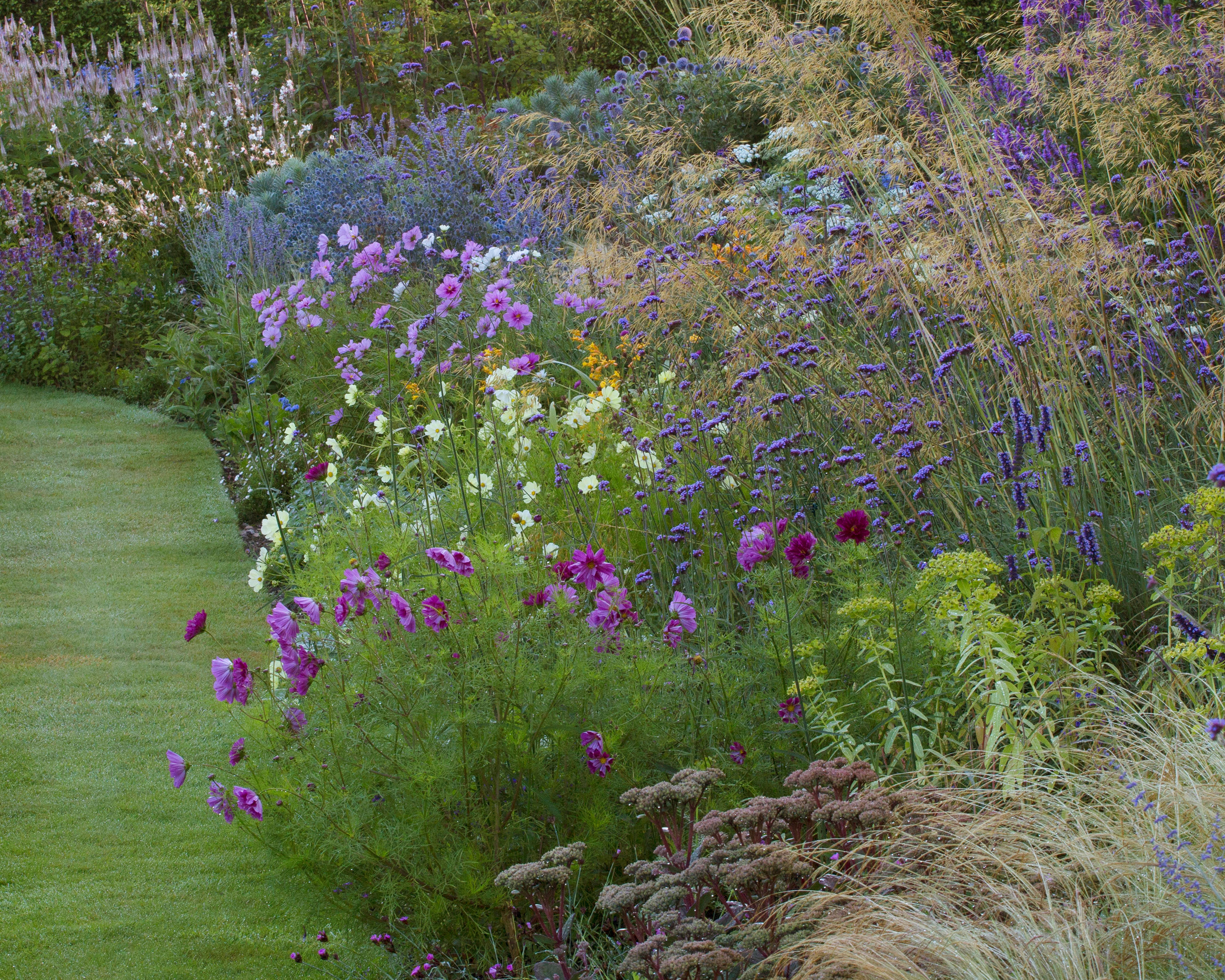
Do cosmos like sun or shade?
Cosmos are sun loving flowers, although they will tolerate a little shade in warmer climates.
Cosmos and zinnias are good companions and mix them also with other sun-loving plants in borders, beds, meadow planting and containers, such as Verbena bonariensis, alstroemeria, calendula, eryngium, dahlias and nepeta.
'Cosmos can be combined with almost all full sun border plants to give that "wow" factor mid to late season. Infilled in a shrub border or alongside flowering plants, such as monarda, salvias and gaura works well,' says garden designer Charlie Bloom.
The range of colors allows for diverse combinations, whether bright and breezy or more subtle, so there’s lots of scope.
Sign up to the Homes & Gardens newsletter
Design expertise in your inbox – from inspiring decorating ideas and beautiful celebrity homes to practical gardening advice and shopping round-ups.

Leigh Clapp is a professional photographer with over 25 years experience, primarily as a garden specialist photojournalist but also with food and travel. She delights in exploring gardens, discovering the tiny elements to their overall essence and meeting lots of enthusiastic gardeners along the way. Leigh’s work appears in magazines, newspapers and books, both in the UK and abroad, including Period Living, Country Life, and Gardens Illustrated; as well as being sole photographer for a number of books, including Garden Details, Feng Shui in the Garden, Vertical Gardens and From the Garden – fresh seasonal cooking.
-
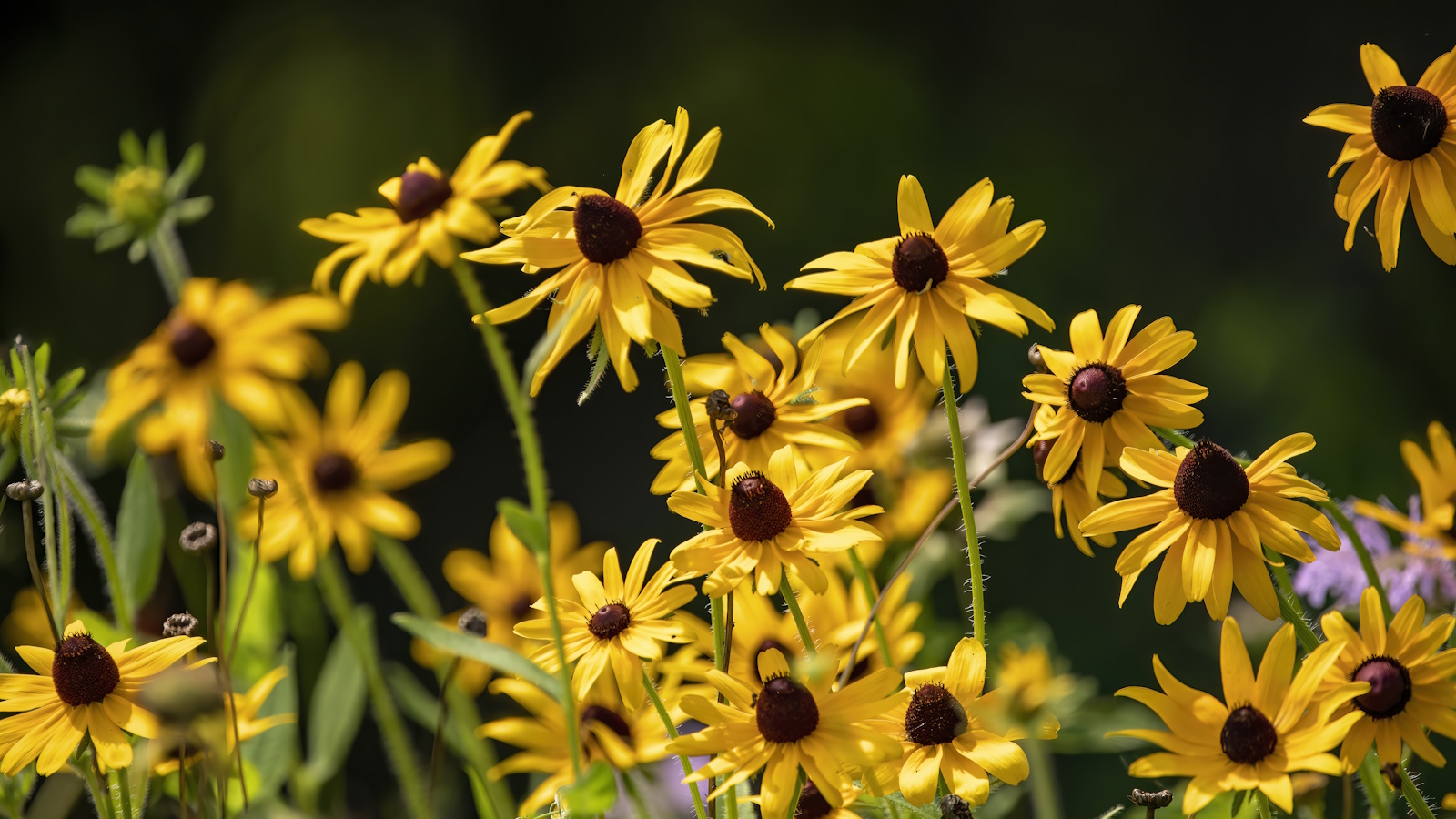 10 of the best plants for clay soil – experts recommend the flowers, shrubs and trees that can thrive in challenging conditions
10 of the best plants for clay soil – experts recommend the flowers, shrubs and trees that can thrive in challenging conditionsDiscover what varieties to grow if you want the best plants for clay soil
By Sarah Wilson
-
 The biggest curtain trends to follow in 2025 – 8 key looks to shop that will instantly elevate your rooms
The biggest curtain trends to follow in 2025 – 8 key looks to shop that will instantly elevate your roomsThese are the colors, styles, and materials to embrace in your windows this year if you want desirable drapes, plus our favorite places to shop the trends
By Lilith Hudson
-
 Water garden ideas – 9 ways to introduce soothing water to your outdoor space
Water garden ideas – 9 ways to introduce soothing water to your outdoor spaceFrom cascading fountains to wildlife ponds, there are plenty of ways to create a tranquil water garden
By Leigh Clapp
-
 How to grow poppies
How to grow poppiesFind out how to grow poppies to enjoy the beauty of these brightly colored tissue paper-like blooms
By Leigh Clapp
-
 How to grow delphiniums from seed
How to grow delphiniums from seedFind out how to grow delphiniums from seed and enjoy these colorful cottage garden favorites filling beds and borders
By Leigh Clapp
-
 How to grow ferns – when and how to plant and care for them
How to grow ferns – when and how to plant and care for themLearn how to grow ferns to enjoy the texture and form of these versatile plants in many areas of your garden
By Leigh Clapp
-
 How to grow sweet peas from seed – in borders and pots
How to grow sweet peas from seed – in borders and potsFind out how to grow sweet peas and where to enjoy their wonderful color, ruffled blooms and sweet fragrance in your garden
By Pippa Blenkinsop
-
 How to make fat balls for birds – easy steps feed our feathered friends
How to make fat balls for birds – easy steps feed our feathered friendsLearn how to make fat balls for birds to ensure their wellbeing throughout the winter
By Holly Reaney
-
 Planning a kitchen garden – from layouts to picking the best crops
Planning a kitchen garden – from layouts to picking the best cropsPlanning a kitchen garden is easy with this expert advice – whether yours is in beds, borders or a dedicated patch – you're guaranteed success
By Leigh Clapp
-
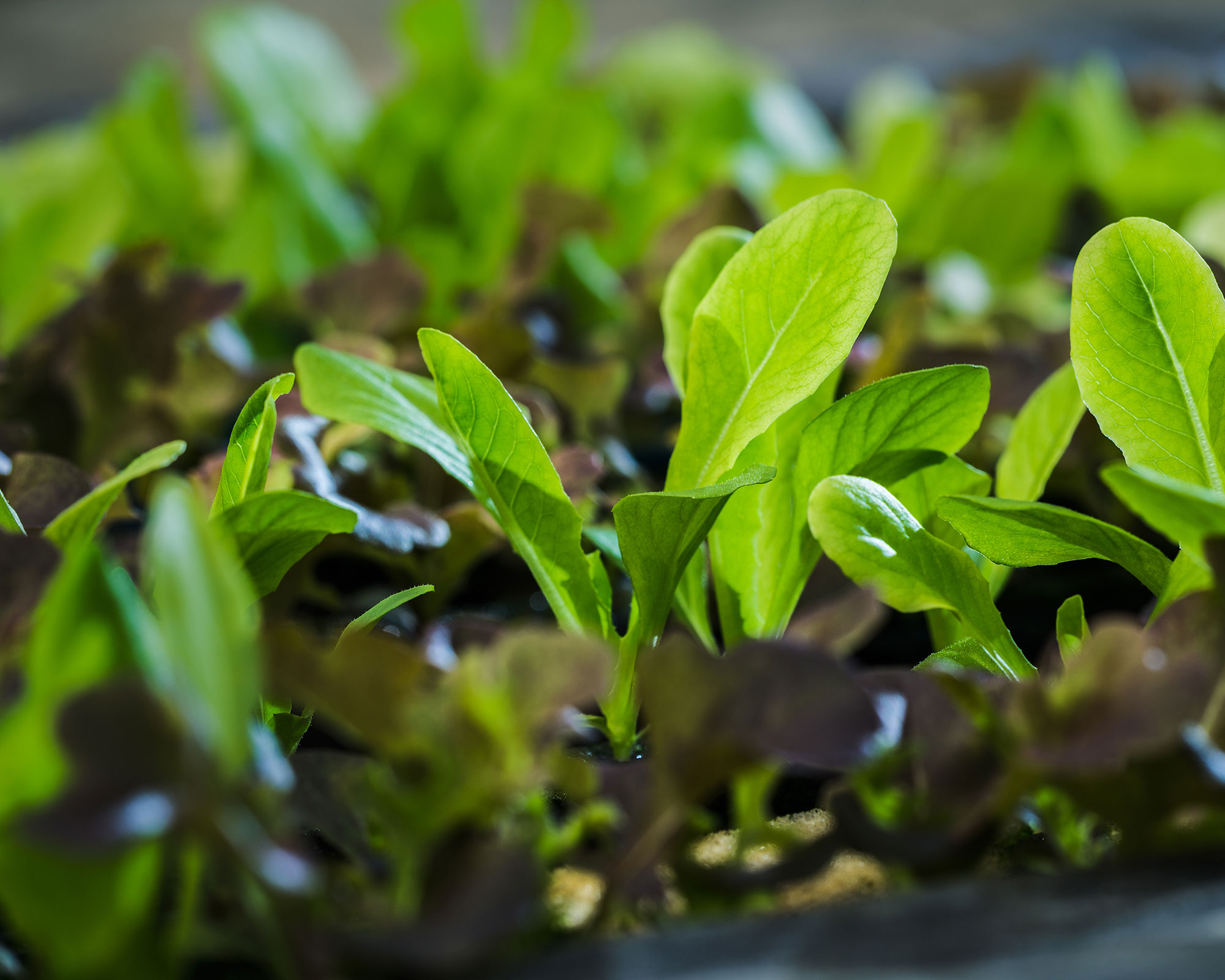 How to grow spinach – indoors or outdoors for healthy leaves
How to grow spinach – indoors or outdoors for healthy leavesFind out how to grow spinach in containers or in the garden to have a year round supply of these delicious and healthy leaves
By Rachel Crow
